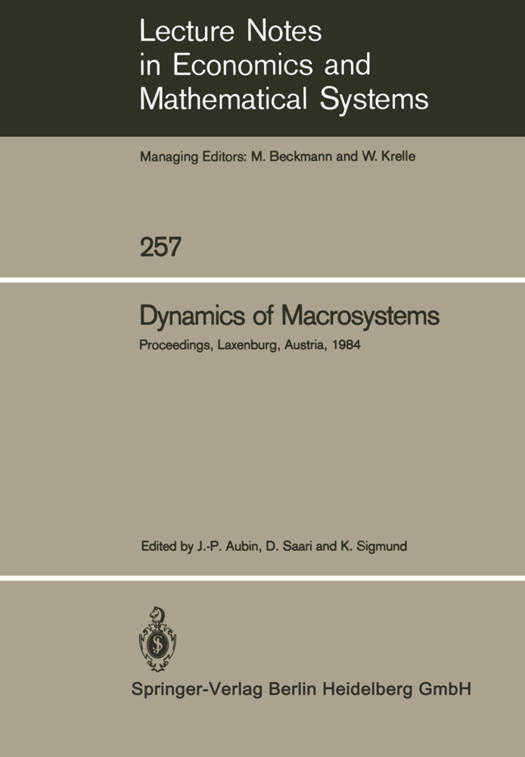
Je cadeautjes zeker op tijd in huis hebben voor de feestdagen? Kom langs in onze winkels en vind het perfecte geschenk!
- Afhalen na 1 uur in een winkel met voorraad
- Gratis thuislevering in België vanaf € 30
- Ruim aanbod met 7 miljoen producten
Je cadeautjes zeker op tijd in huis hebben voor de feestdagen? Kom langs in onze winkels en vind het perfecte geschenk!
- Afhalen na 1 uur in een winkel met voorraad
- Gratis thuislevering in België vanaf € 30
- Ruim aanbod met 7 miljoen producten
Zoeken
Dynamics of Macrosystems
Proceedings of a Workshop on the Dynamics of Macrosystems Held at the International Institute for Applied Systems Analysis (Iiasa), Laxenburg, Austria, September 3-7, 1984
€ 122,95
+ 245 punten
Omschrijving
The history of the disciplines that led to the development of systems analysis is marked by a curious relationship between static and dynamic approaches. Although lhe imporlance of the dynamical element was recognized quile early on, lhe method chosen, more often than not, was a static equilibrium analysis. One reason for this obviously lies in the mathematical intricacies of non- equilibrium situations. Although Poincare and various other classical authors pointed oul the amazing complexity of some mechanical problems, lhe general lrend, as reflected in the standard texlbooks, was lo ignore such "subtleties" and concenlrate on a handful of lraclable equations and localized slability analysis. Il is only in lhe lasl decade thal the importance and universal nature of complicated asymptotic behavior has become more widely recognized. This shift in perspective is due lo lhe development of new mathematical lechniques, lo the spread of computing facilities and, possibly, lo lhe growing recognition of the limits of lhe human ability to handle, predict and control complex situatIons.
Specificaties
Betrokkenen
- Uitgeverij:
Inhoud
- Aantal bladzijden:
- 283
- Taal:
- Engels
- Reeks:
- Reeksnummer:
- nr. 257
Eigenschappen
- Productcode (EAN):
- 9783540159872
- Verschijningsdatum:
- 1/10/1985
- Uitvoering:
- Paperback
- Formaat:
- Trade paperback (VS)
- Afmetingen:
- 170 mm x 244 mm
- Gewicht:
- 471 g

Alleen bij Standaard Boekhandel
+ 245 punten op je klantenkaart van Standaard Boekhandel
Beoordelingen
We publiceren alleen reviews die voldoen aan de voorwaarden voor reviews. Bekijk onze voorwaarden voor reviews.








